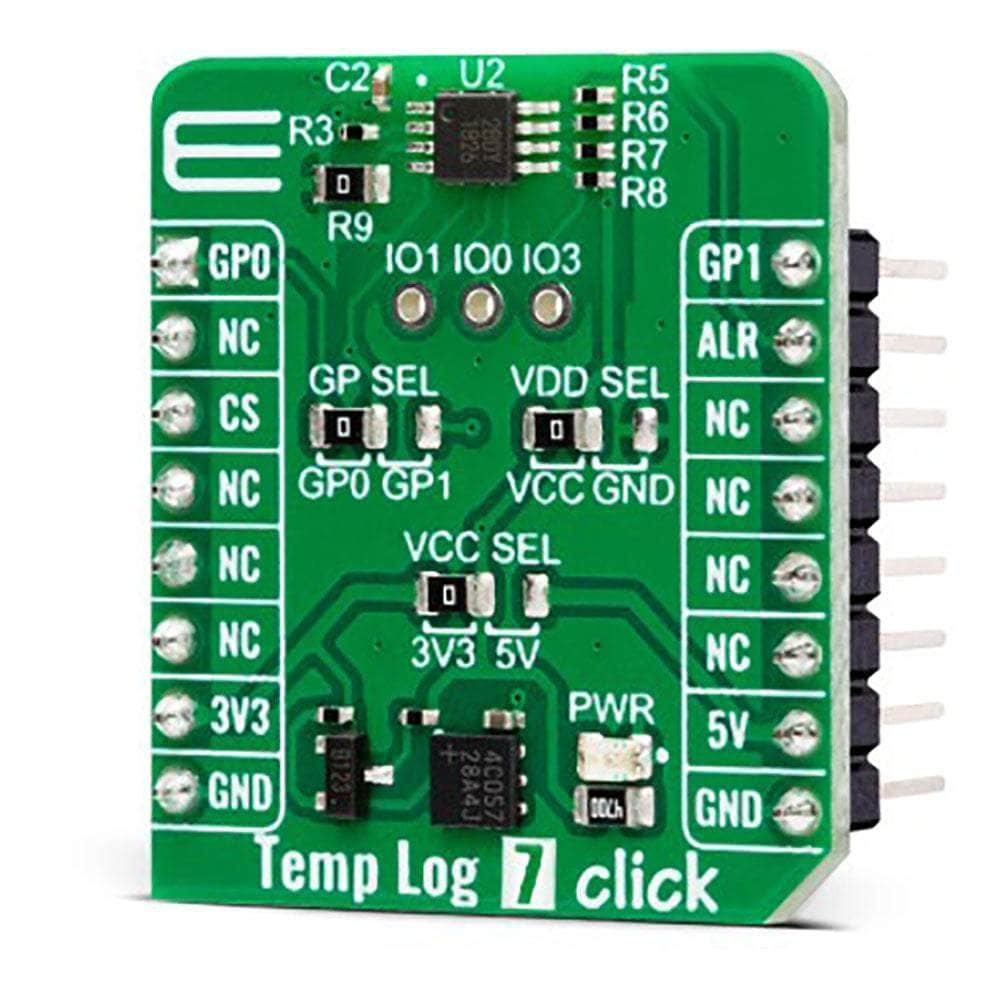
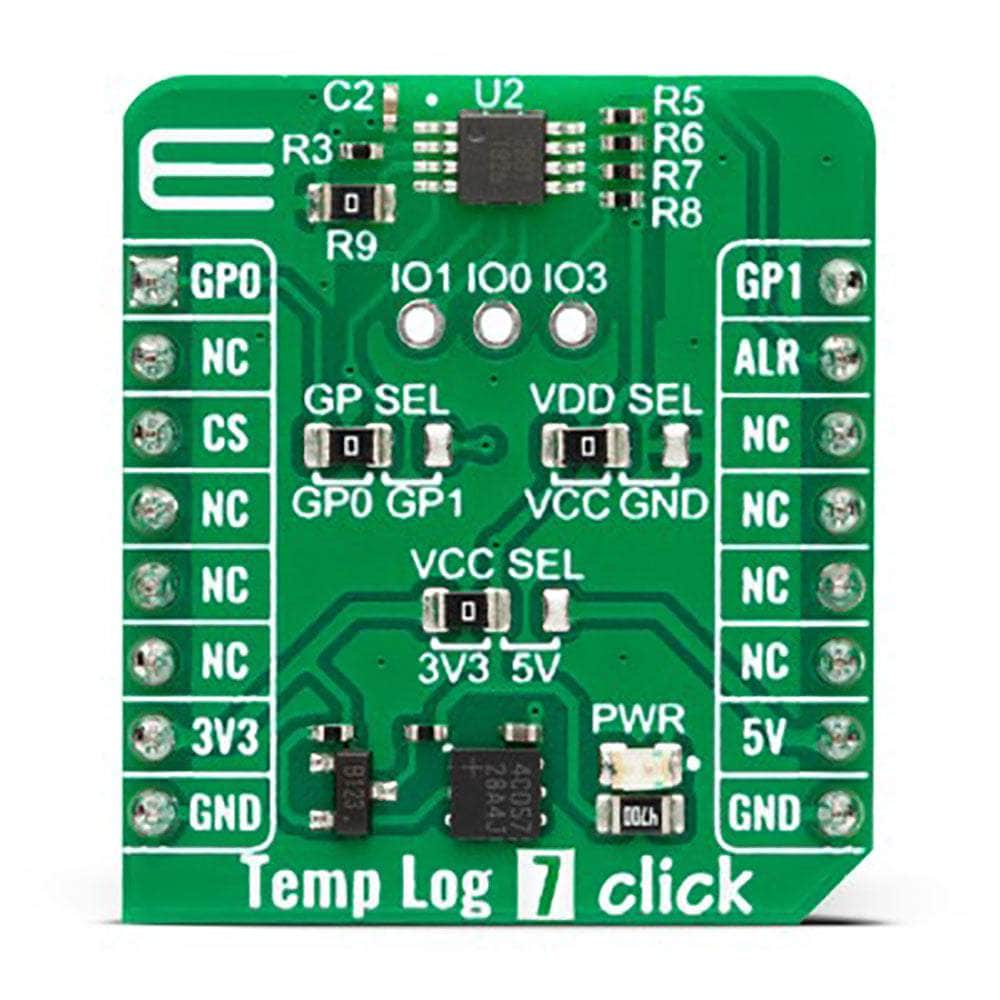
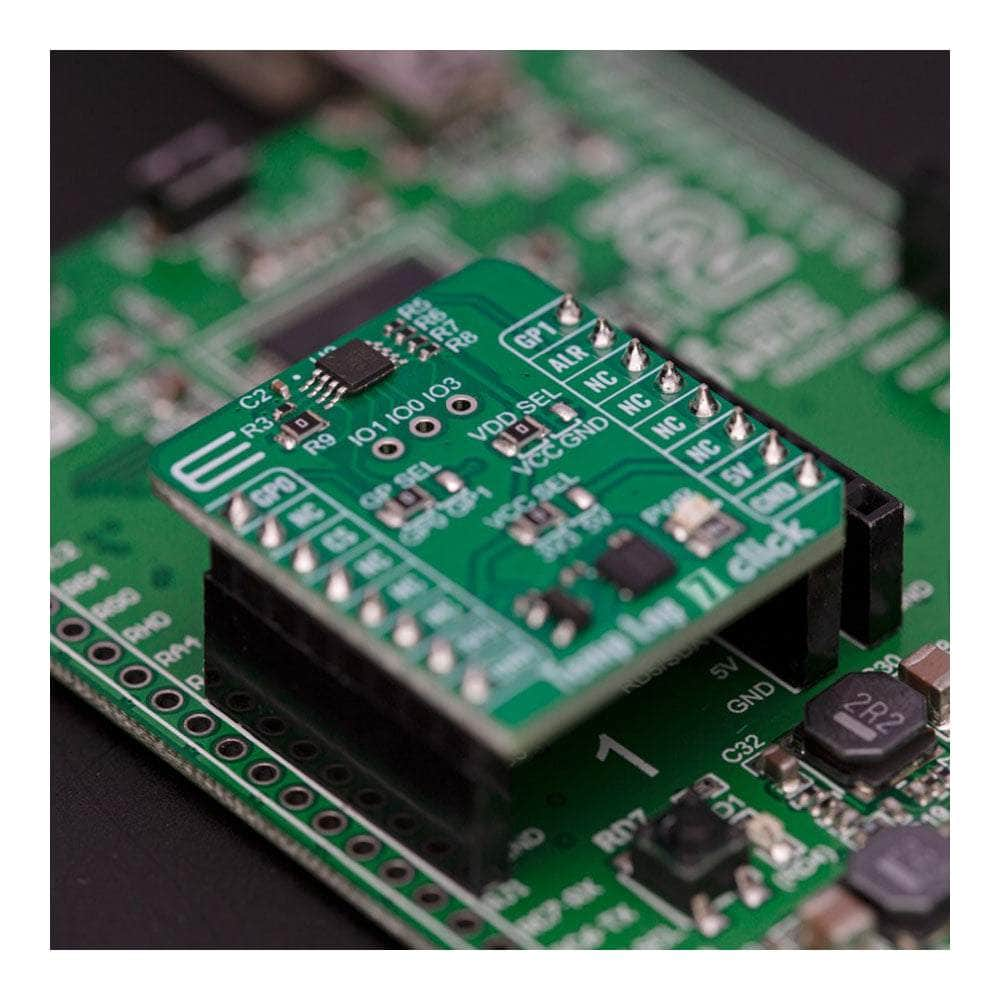
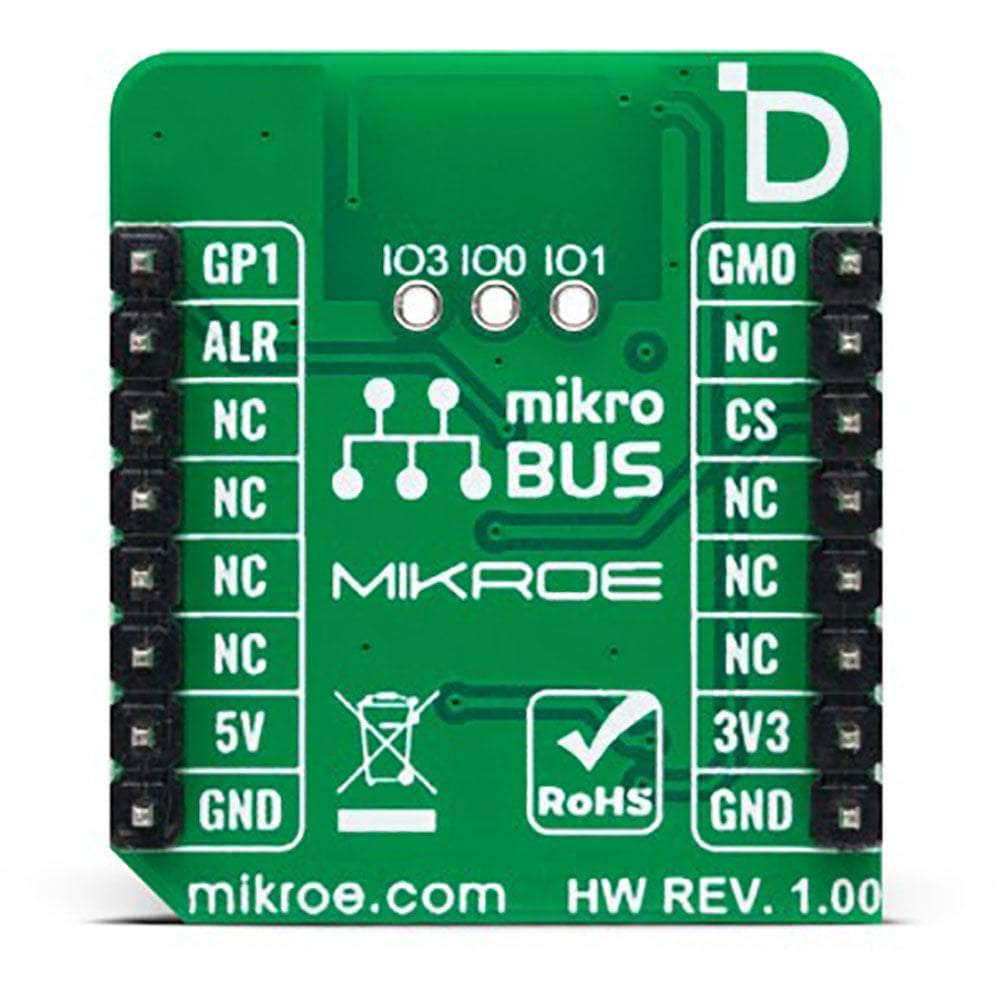
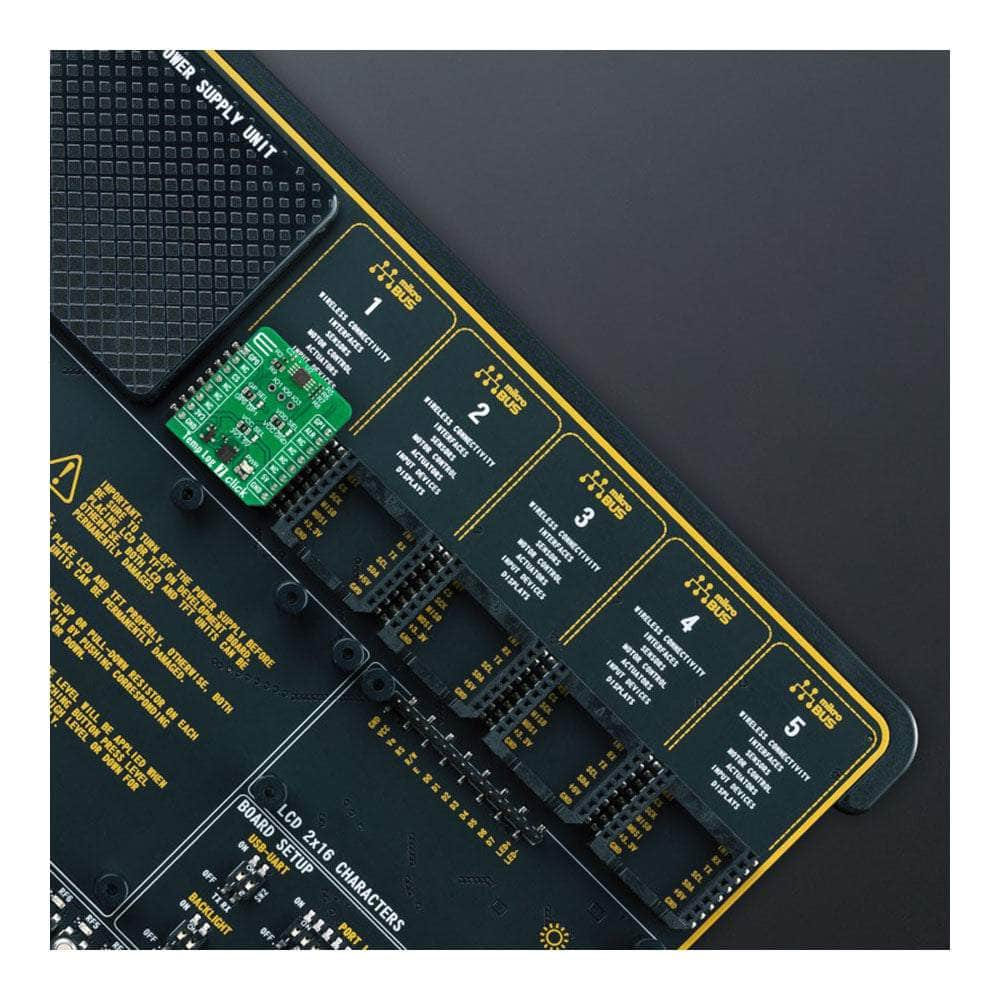

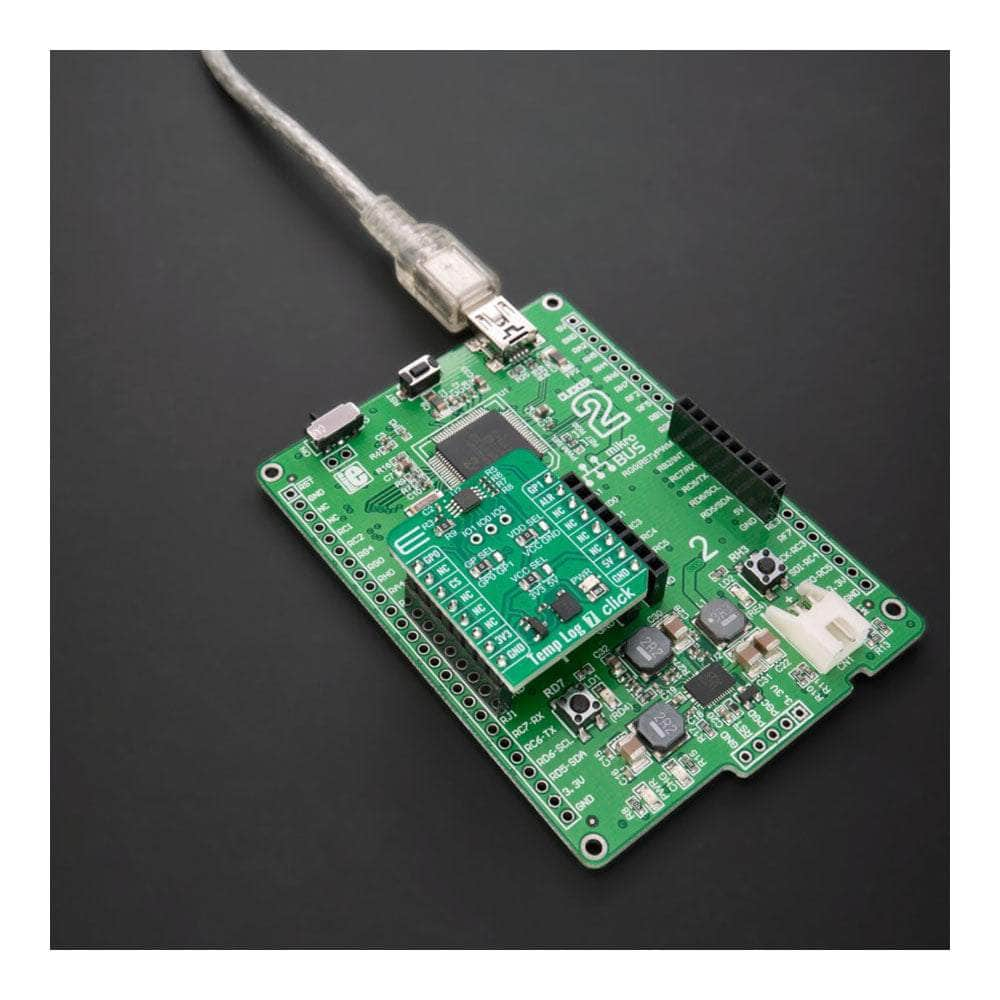
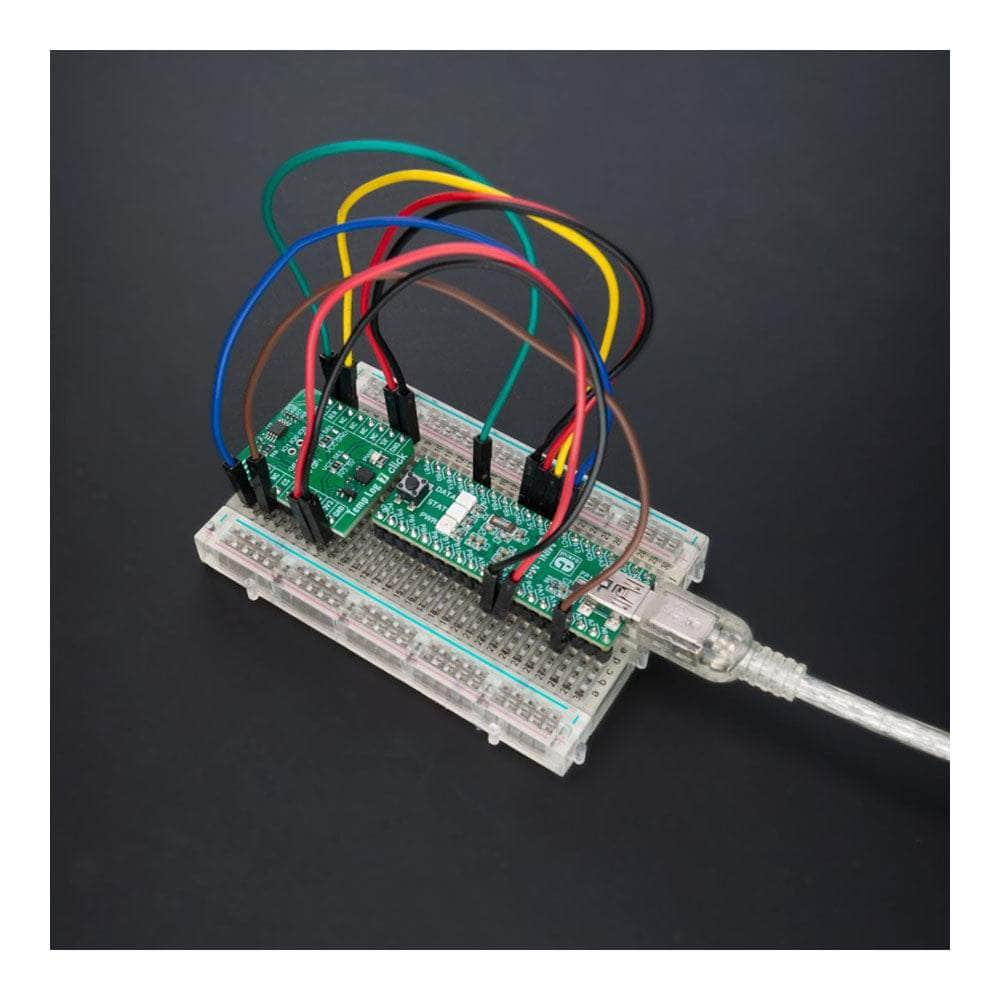
Key Features
Overview
Introducing the Temp-Log 7 Click Board™: Ultimate Solution for Accurate Temperature Measurement
Discover the Temp-Log 7 Click Board™, a powerful and compact add-on board designed to measure precisely and record temperature fluctuations in your environment. Equipped with the state-of-the-art TMP1826 temperature sensor from Texas Instruments, this board offers high accuracy and reliability. It is perfect for industrial, consumer, and environmental applications where exact temperature measurement is crucial.
Key Features of the Temp-Log 7 Click Board™
With an impressive operating temperature range of -20°C to +85°C, the Temp-Log 7 Click Board™ provides ±0.1°C (typical) and ±0.3°C (maximum) accuracy, ensuring precise temperature monitoring. The integrated 2-Kbit EEPROM and factory-programmed 64-bit unique identification number ensure effortless addressing and NIST traceability. Enjoy the convenience of a programmable alarm function, which signals the MCU in the event of a specific temperature event, and the versatility of three configurable digital I/O pins for general purposes or identifying the device's position on a shared bus.
Seamless Software Development with mikroSDK Compliant Library
Experience hassle-free software development with the mikroSDK-compliant library, which includes user-friendly functions that simplify the entire process. The Temp-Log 7 Click Board™ is a fully tested product, ready to be integrated into any system equipped with a mikroBUS™ socket.
Upgrade Your Thermal Management Today with the Temp-Log 7 Click Board™
Don't compromise on the accuracy and reliability of your temperature measurements. Choose the Temp-Log 7 Click Board™ for an unparalleled temperature monitoring experience, ensuring the optimal performance of your applications. Get your hands on this advanced and versatile solution today!
Downloads
Wir präsentieren das Temp-Log 7 Click Board™: Die ultimative Lösung für genaue Temperaturmessungen
Entdecken Sie das Temp-Log 7 Click Board™, eine leistungsstarke und kompakte Zusatzplatine zum präzisen Messen und Aufzeichnen von Temperaturschwankungen in Ihrer Umgebung. Ausgestattet mit dem hochmodernen Temperatursensor TMP1826 von Texas Instruments bietet diese Platine hohe Genauigkeit und Zuverlässigkeit. Sie eignet sich perfekt für Industrie-, Verbraucher- und Umweltanwendungen, bei denen eine genaue Temperaturmessung entscheidend ist.
Hauptmerkmale des Temp-Log 7 Click Board™
Mit einem beeindruckenden Betriebstemperaturbereich von -20 °C bis +85 °C bietet das Temp-Log 7 Click Board™ eine Genauigkeit von ±0,1 °C (typisch) und ±0,3 °C (maximal) und gewährleistet so eine präzise Temperaturüberwachung. Der integrierte 2-Kbit-EEPROM und die werkseitig programmierte eindeutige 64-Bit-Identifikationsnummer sorgen für mühelose Adressierung und NIST-Rückverfolgbarkeit. Genießen Sie den Komfort einer programmierbaren Alarmfunktion, die die MCU im Falle eines bestimmten Temperaturereignisses signalisiert, und die Vielseitigkeit von drei konfigurierbaren digitalen E/A-Pins für allgemeine Zwecke oder zur Identifizierung der Position des Geräts auf einem gemeinsam genutzten Bus.
Nahtlose Softwareentwicklung mit mikroSDK-kompatibler Bibliothek
Erleben Sie mühelose Softwareentwicklung mit der mikroSDK-kompatiblen Bibliothek, die benutzerfreundliche Funktionen enthält, die den gesamten Prozess vereinfachen. Das Temp-Log 7 Click Board™ ist ein vollständig getestetes Produkt, das in jedes System integriert werden kann, das mit einer mikroBUS™-Buchse ausgestattet ist.
Aktualisieren Sie Ihr Wärmemanagement noch heute mit dem Temp-Log 7 Click Board™
Gehen Sie bei der Genauigkeit und Zuverlässigkeit Ihrer Temperaturmessungen keine Kompromisse ein. Wählen Sie das Temp-Log 7 Click Board™ für ein beispielloses Temperaturüberwachungserlebnis und stellen Sie die optimale Leistung Ihrer Anwendungen sicher. Holen Sie sich diese fortschrittliche und vielseitige Lösung noch heute!
| General Information | |
|---|---|
Part Number (SKU) |
MIKROE-5598
|
Manufacturer |
|
| Physical and Mechanical | |
Weight |
0.02 kg
|
| Other | |
Country of Origin |
|
HS Code Customs Tariff code
|
|
EAN |
8606027384912
|
Warranty |
|
Frequently Asked Questions
Have a Question?
-
Is the Temp-Log 7 Click Board™ ready to use?
Yes, the Temp-Log 7 Click Board™ comes as a fully tested product, ready to be used on a system equipped with the mikroBUS™ socket.
-
Is there software available for the Temp-Log 7 Click Board™?
Yes, the Temp-Log 7 Click Board™ is supported by a mikroSDK compliant library, which includes functions that simplify software development.
-
What applications is the Temp-Log 7 Click Board™ suitable for?
The Temp-Log 7 Click Board™ is suitable for the thermal management of industrial, consumer, and environmental applications where accurate temperature measurement is critical for proper operation.
-
What are the digital I/O pins on the Temp-Log 7 Click Board™ used for?
The Temp-Log 7 Click Board™ has three digital I/O pins configurable for general purposes or to identify the device's position on a shared bus.
-
What is the programmable alarm function on the Temp-Log 7 Click Board™?
The Temp-Log 7 Click Board™ has a programmable alarm function that outputs an interrupt signal to the MCU when a specific temperature event occurs.
-
What is the unique identification number for addressing on the Temp-Log 7 Click Board™?
The Temp-Log 7 Click Board™ comes with a factory-programmed 64-bit unique identification number for addressing and NIST traceability.
-
What is the accuracy of the Temp-Log 7 Click Board™?
The Temp-Log 7 Click Board™ has a high accuracy of ±0.1°C (typical)/±0.3°C (maximum).
-
What is the operating temperature range of the Temp-Log 7 Click Board™?
The Temp-Log 7 Click Board™ supports a wide operating temperature range from –20°C to +85°C.
-
What sensor does the Temp-Log 7 Click Board™ use?
The Temp-Log 7 Click Board™ features the TMP1826, a high-accuracy, 1-Wire® compatible digital output temperature sensor from Texas Instruments with integrated 2-kbit EEPROM.
-
What is the Temp-Log 7 Click Board™?
The Temp-Log 7 Click Board™ is a compact add-on board used to measure and record the temperature of an environment over time.








